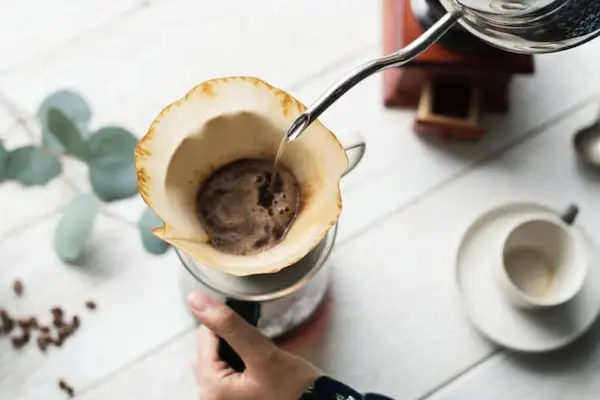Making an espresso using a coffee maker is one of the simplest processes ever. In fact, preparing the espresso would take more time than actually brewing it. The brewing process takes just about 30 seconds depending on how many shots you’re going for; but before you get there, you would have to follow certain precautions to ensure that you end up with tasty espresso coffee. For coffee fans that prefer something bitter, you will also find the right steps to get that perfect brew.
In this guide, you will learn how to make espresso with a coffee maker; and when you’re done, you should be able to get it right even if it is your first time.

Things to Consider when Making Espresso with a Coffee Maker
Fresh Roast Coffee Beans
The taste of your coffee would depend on how fresh the coffee beans are. To ensure you get the taste right, you could invest in a good bean grinder or go for coffee beans that were roasted recently.
Water Temperature and Quality
Water is the most essential ingredient when it comes to making coffee, apart from the coffee bean for your espresso. As such, you should use high-quality water and keep the water at the right temperature when brewing.
Use filtered water only since it contains fewer minerals that can affect the taste of the coffee. When brewing, ensure that the water you’re using is not boiling consistently.
Types of Roast
The type of roast won’t affect the quality of the espresso coffee, but it will determine the taste. The pick here is between light and dark roast coffee beans. The dark type will give you thick and bitter-tasting espresso.
Grind
To get the best taste, you should ensure that the ground coffee is neither too fine nor too coarse. Getting the right consistency usually takes five to six tries but all that hard work pays out in the final result.
If the coffee beans are too coarsely ground, you won’t end up with the best results since the water will percolate easily through them. If they are too finely ground, they will continue to brew for a long time and this will give you bitter-tasting coffee.
Coffee to Water Ratio
You should ensure that the quantity of coffee and the amount of water used are at the right ratio. You should go with 1.5 ounces of water for every 1 tablespoon of coffee grounds.
How to Make Espresso Using a Coffee Maker
Step 1
Prep the coffee maker by heating it to boost the brewing process. Insert the porta-filter into the coffee maker and run a blank for 10 – 15 minutes just before the actual brewing process. When you’re about to use it, ensure that there is no water in the reservoir.
Step 2
To start the brewing process, pour filtered water into the reservoir. Turn up the heat and wait till the temperature gets to about 96 degree Celsius. Never allow the water to reach boiling point as this won’t give the best results.
Ensure that the porta-filter is dry. If not, wipe with a dry cloth, and dose it so that it registers zero on its scale. If this is your first time brewing espresso, you should always use a digital scale for weighing.
Step 3
The next step is to pour the coffee beans into the porta-filter. You need to decide on the shots you want before adding the coffee beans. About 7 grams should get you a single-shot espresso while double that quantity will get you a double-shot. Once you’ve weighed it correctly, you can go ahead with the brewing process. Always stick to the right amounts as this would not only affect the taste but also the flavor of the espresso.
Step 4
With everything in place, you would have to apply pressure to tamp the espresso well into the porta-filter. This should be done carefully. Apply around 30 pounds of pressure and at the same time, hold the tamp handle firmly. This will result in the water uniformly passing through the coffee, so you need to pay attention to the amount of pressure placed on the porta-filter while tamping. If you place too much pressure, this could affect the flavor of the brewed coffee.
Step 5
Next, insert the porta-filter into the brewing head of the machine. You should run your coffee maker’s brew head for a few minutes before using it to remove the remains of the previous brew. This ensures that the brewing cup is clean and fresh.
Step 6
With the porta-filter inside the coffee maker, place a warm cup in the slot of your machine and set a timer. Wait for a few seconds and you will notice thick and creamy espresso dripping into the cup. Ensure that you turned on the coffee maker right after you inserted the porta-filter with the espresso on it. If you let the filter stay in the coffee maker for a while, it will end up giving out bitter coffee.
The time set for the brewing process would depend on the number of shots you’re brewing. For single shots of 30ml, you would only have to wait for 20 seconds before you stop the machine. The machine will also give an indication as to when you should stop the shot. This is usually when you notice that the dripping liquid has turned slightly blonde in color. Double-shot espresso would require about 30 seconds to brew.
Step 7
With the coffee in your cup, you can go ahead and add some topping or use it as a base for other beverages. Ensure that you drink the espresso immediately since that’s the best time to get the authentic flavors and benefits.
With your espresso brewed and served, it is time to clean and store your coffee maker. Rinse the porta-filter and wipe it dry. Also, clean the brew head before using it for the next brewing process.
FAQs on Making Espresso with a Coffee Maker
Is Measuring the Dose of Espresso Necessary?
When it comes to making the perfect coffee, it is very important that you use a digital scale to measure the espresso coffee beans to determine the yield. If you have other ways of determining what 7 grams of coffee beans should weigh like, it is best to put them aside. This is because you would have to add the right amount of water to the espresso to ensure you end up with the right flavor.
How Important is the Roast of the Bean?
The roast of the beans doesn’t actually affect the quality of the espresso. You’d still get the same concentrated, high-caffeine coffee regardless of the types of roast you go for. However, the types of roast used will determine the taste of the espresso. Dark roast coffee beans give you bitter-tasting espresso while light roast types make just the opposite.
What about the Grind?
When it comes to making espresso with an authentic taste and the right flavor, the grind is almost everything. You can hit that medium-fine grind by investing in a burr grinder or purchase ground coffee beans. Avoid using a blade grinder or purchasing very fine or very coarse coffee beans, or you will end up with a bad-tasting cup of espresso.







